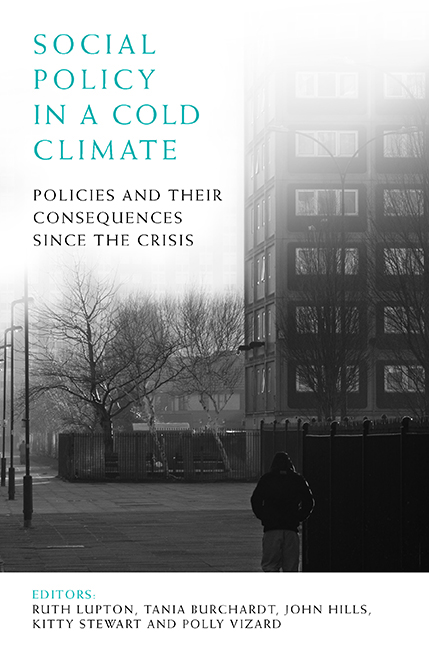Eight - Health
Published online by Cambridge University Press: 01 September 2022
Summary
The situation on the eve of the crisis
On the eve of the financial crisis, in the summer of 2007, the UK was experiencing a period of substantial and sustained increases in real public expenditure on health. Looking back to 1997, Labour had made the transition into power with health at the top of the political agenda, with Blair urging voters to support Labour in order to ‘save the NHS’. Successive Labour Party manifestos, in 1997, 2001 and 2005, had put emphasis on an overall commitment to the NHS, free at the point of delivery and based on need, not the ability to pay, while highlighting the need to finance a major programme of healthcare investment, modernisation and reform. Real public expenditure on health in the UK had almost doubled during Blair's decade in power, with a real increase from £64.4 billion in 1997/98 to £116.9 billion in 2007/08 (HM Treasury, 2015c).
The results of Labour's large-scale cash investment in healthcare are discussed in detail in our companion paper (see Vizard and Obolenskaya, 2013). The substantial growth in resources during Labour's first two terms in office financed a major supply-side expansion in healthcare, with a considerable expansion of NHS inputs and outputs including staffing, services and healthcare activities. Substantial returns to Labour's investment in health over this period were also reflected in overall indicators of healthcare quality and satisfaction. In 1997, the public had been highly dissatisfied with the NHS, with long waiting lists, pressure for more expenditure on healthcare and demand for private medical insurance going up. By 2007/08, waiting list length and waiting times were down, growth in spending on private medical insurance cover was down, and satisfaction with the NHS had increased substantially.
On healthcare modernisation and reform, a new framework for inspection and regulation had been put into place after 1997 and further evolved during Labour's first two terms. The purchaser– provider split that had been introduced under previous Conservative administrations was retained under Blair, and further reforms emphasised commissioning, organisational decentralisation, competition and patient choice, and information on outcomes. By 2007/08, Labour's healthcare delivery model included autonomous NHS foundation trusts, practice-based GP commissioning and a new system of payment by results, based on the principle that resources should ‘follow’ the patient to the service they choose.
- Type
- Chapter
- Information
- Social Policy in a Cold ClimatePolicies and their Consequences since the Crisis, pp. 147 - 186Publisher: Bristol University PressPrint publication year: 2016



